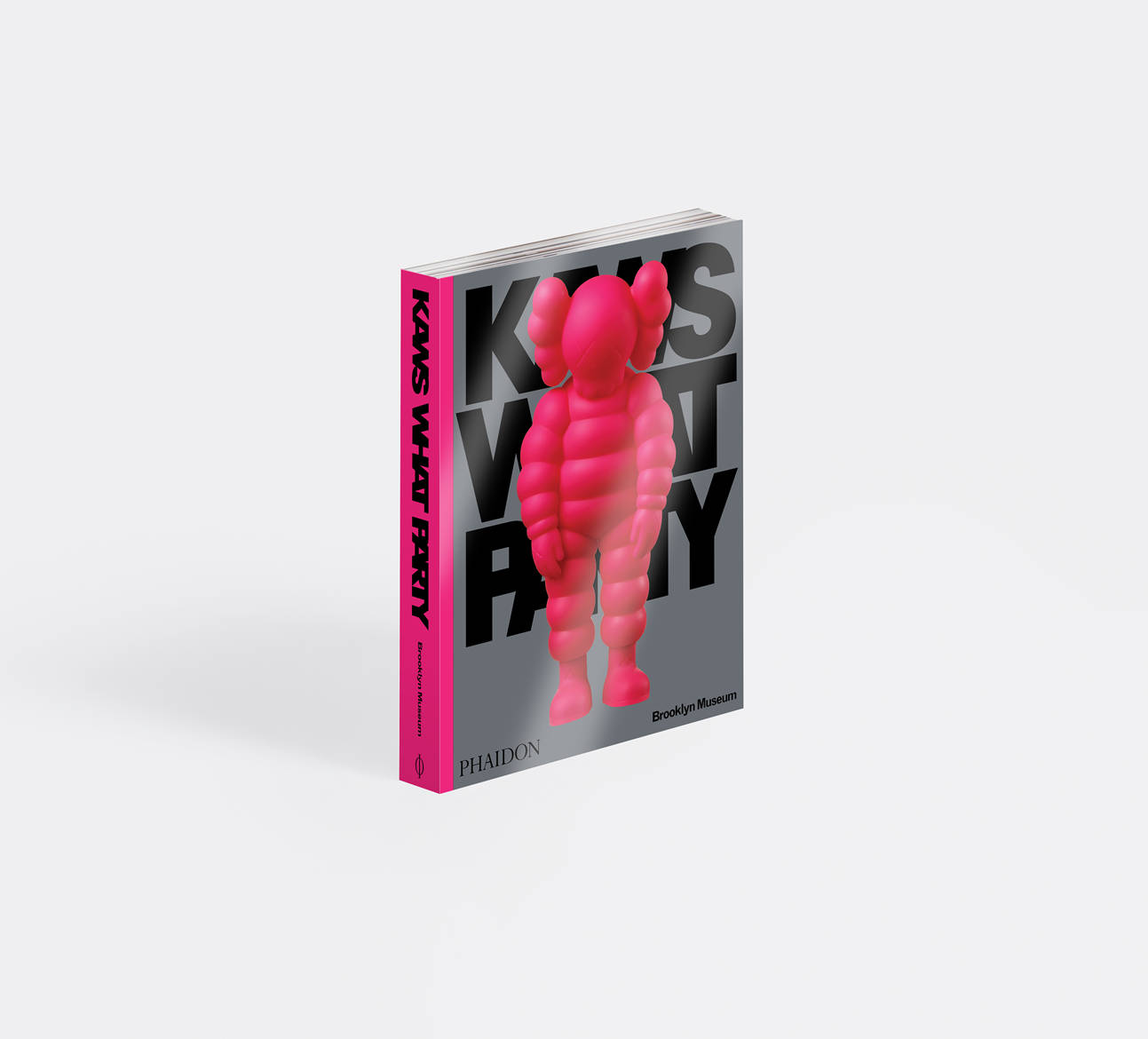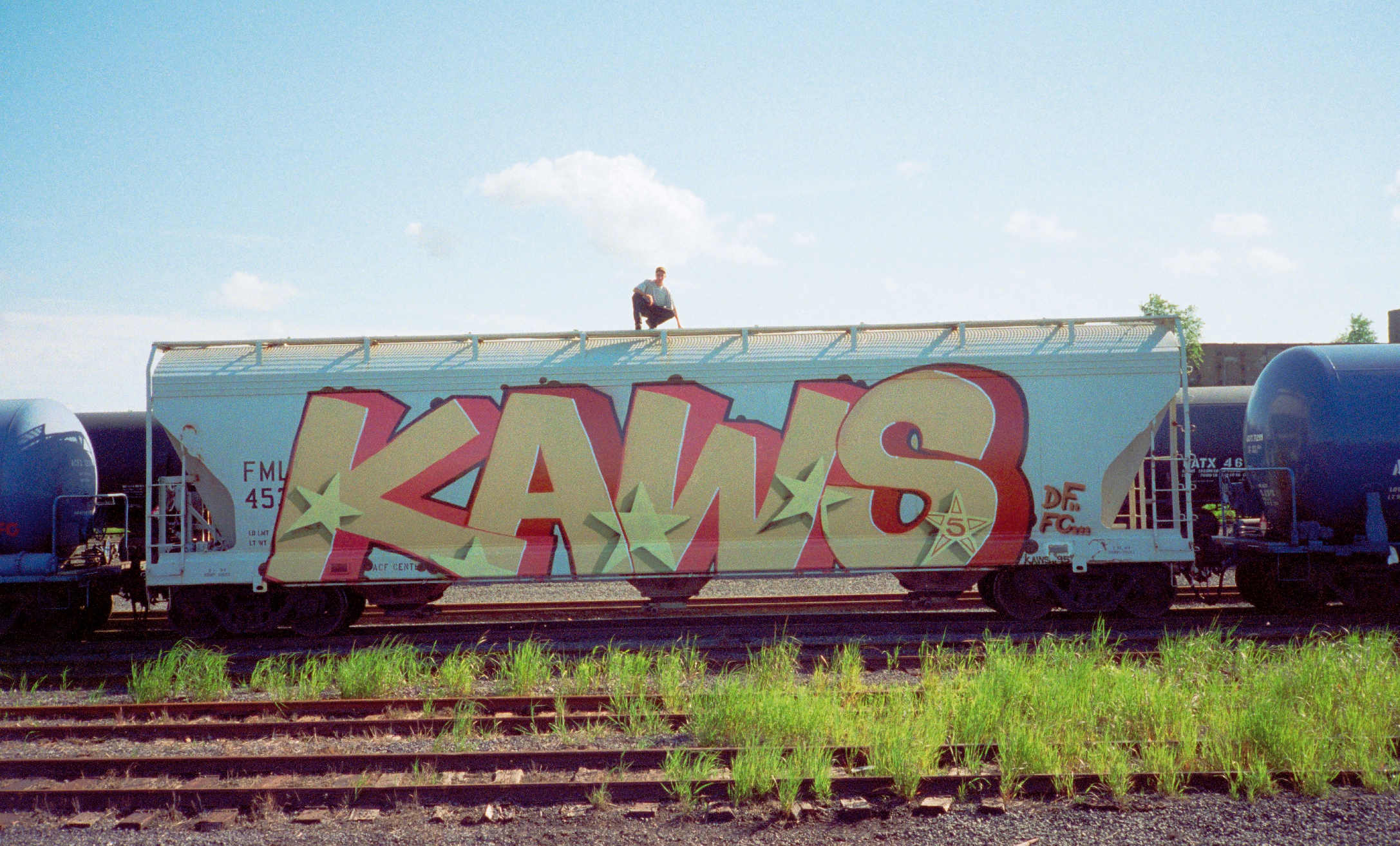
What the early graffiti of KAWS tells us about his later success
The artist made his name in train yards and on the street, and, in the process, learnt some big lessons about art, commerce and communication
What do an artist’s formative years tell us about the work made at their creative peak? Surely we gain quite a bit of insight into Warhol’s love of glamour and commerce by paying attention to his nascent work as a magazine illustrator? Surely Ed Ruscha’s feel for words in pictures must have been shaped, at least in part, by his time spent in the layout department of an LA ad agency. Harland Miller's family life, meanwhile, growing up with a book collector dad, seems to have moulded his practice.
Brian Donnelly, the East Coast American artist better known as KAWS wasn’t shaped by books, advertising work, or magazines. However, an adolescent interest in a certain form of illicit public art seems to have given him a pseudonym, a certain type of social practice, and perhaps even a more advanced relationship with his audience and the art market.
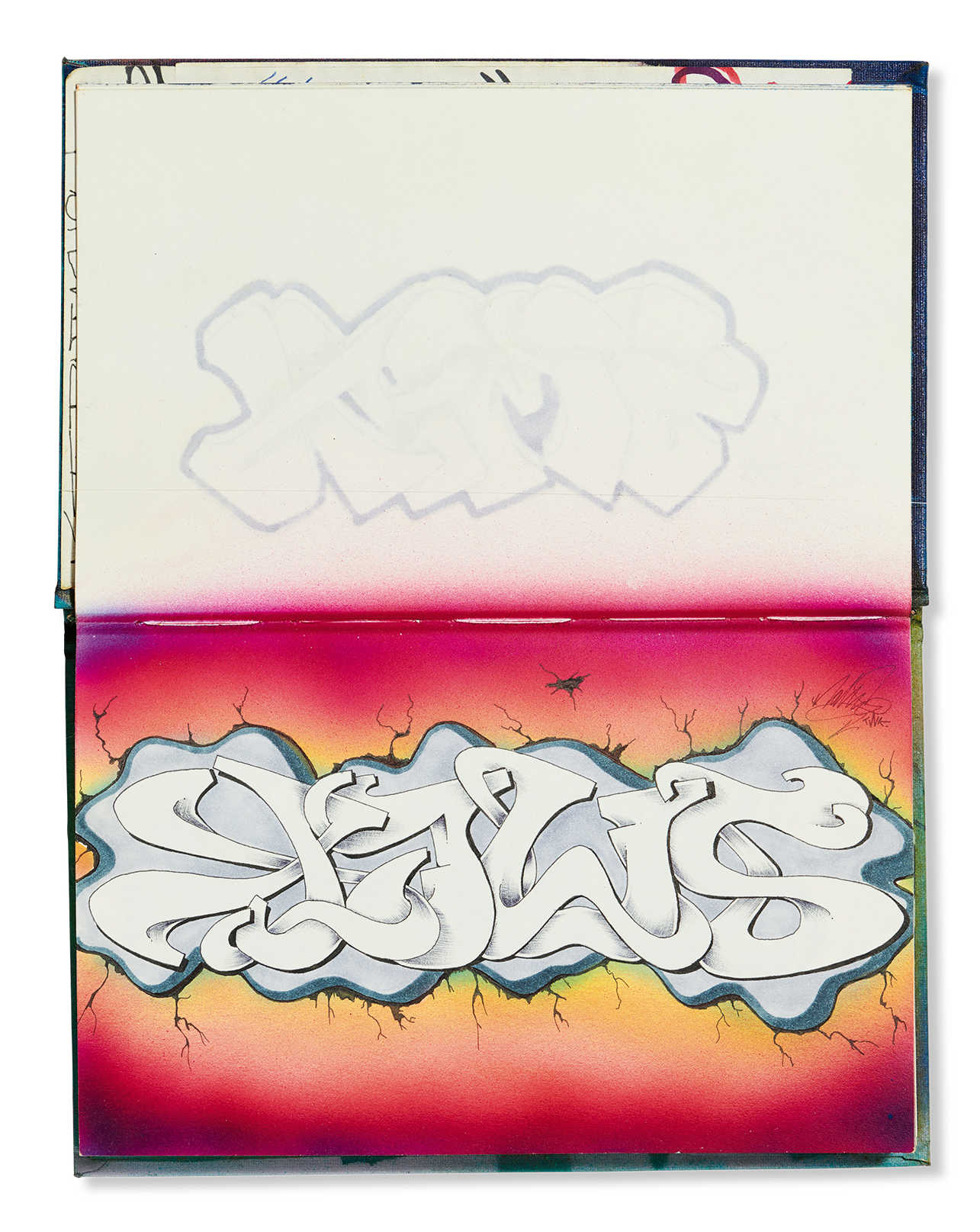
“His start as a graffiti writer occupies a significant place in his artistic formation,” writes the curator Eugenie Tsai in our new book KAWS: WHAT PARTY. “He came to graffiti through friends he knew from skateboarding, an activity at the center of his life as a teen in Jersey City, where he grew up. From 1991, the year he became more seriously involved in ‘bombing,’ through the end of the decade, he tagged walls, freight trains, and billboards, sometimes working solo and sometimes collaborating with a crew.
“Since it frequently appears without permission on property in public spaces, graffiti is often an illegal activity, as it was during its emergence in New York City in the 1970s" Tsai goes on. "Transgressive behavior is undoubtedly part of graffiti’s appeal to youthful practitioners, who adopt assumed identities to avoid detection by authorities. Of course, this situation provides an opportunity to construct distinctive street personas.
“The name KAWS appealed to Donnelly. He liked the way the four letters looked together and sounded as a word, and he experimented with the graphic possibilities they presented, including the angle at which they stood, their flat and illusionistic rendering, and their relationship to one another.”
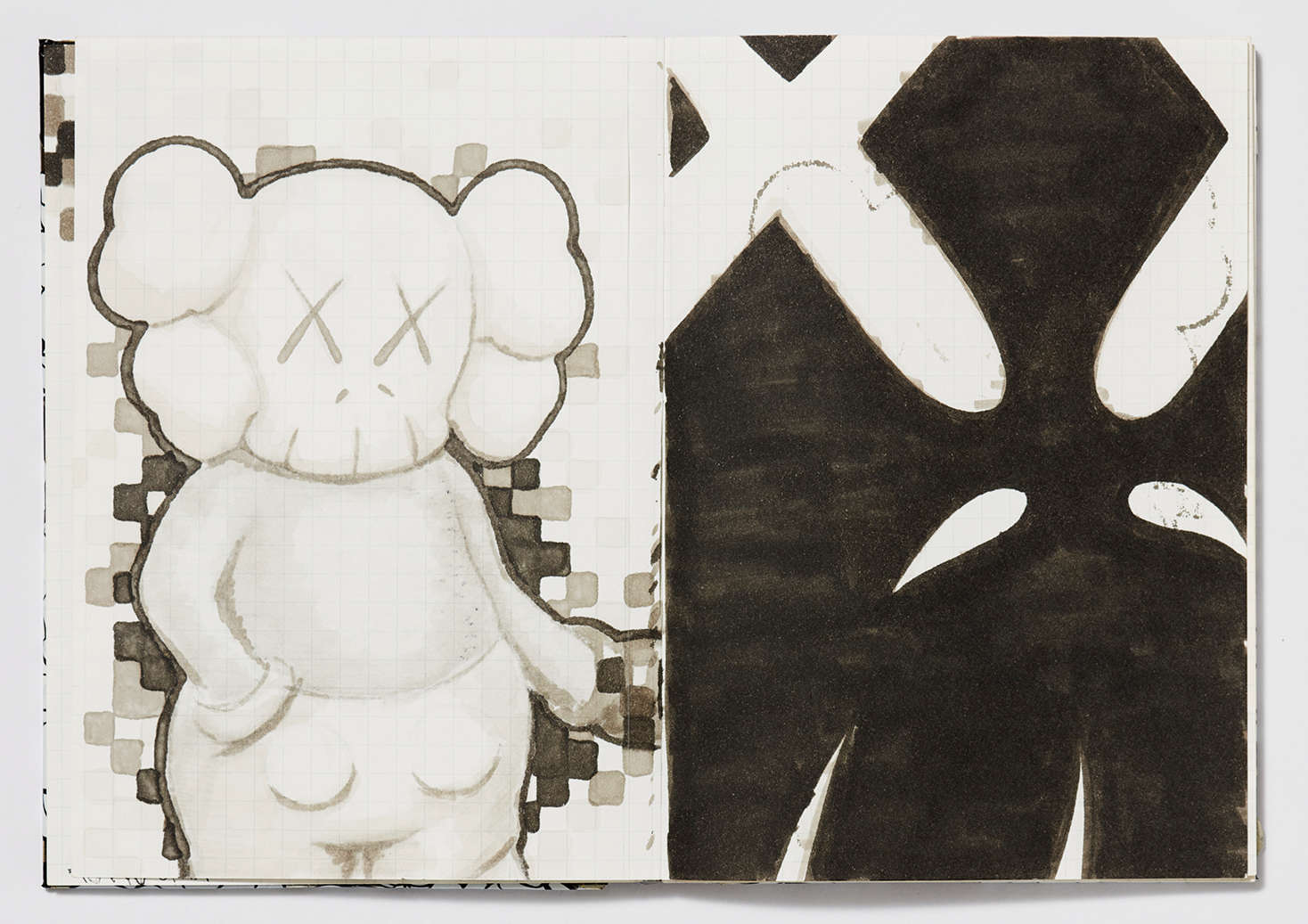
That name of course stuck, alongside an understanding of how public works are best appreciated, both in person, and at a distance. “He learned the necessity of large scale and bold gestures to make an impact on the architecture of an urban landscape, and the need to photographically document projects before they disappeared, especially important when working on ephemeral projects like graffiti, which might get painted over by the property owners or by rival writers,” the curator goes on.
Indeed, KAWS and co developed a kind of Instagram-by-mail, years before the establishment of social media. “He traded examples of his own work and that of other New York writers by sending four-by-six-inch color photographs through the mail to promising writers in the United States and Europe and receiving images in return,” she writes.
Yet perhaps the most important lesson KAWS learnt from graffiti was that mass communication, subversion and commercialism all fit together. "Graffiti grows out of a desire to communicate and connect with the broadest possible audience in a direct and unmediated way," explains Tsai. “By putting his tag out on the streets, he was calling attention to his alter ego KAWS. Tagging private and publicly owned property in urban environments or settings is a way of claiming those spaces.
"Writing during the early days of graffiti in New York, Norman Mailer distilled the essence of the genre as getting the word out about yourself: ‘For now your name is over their name, over the subway manufacturer, the Transit Authority, the city administration. Your presence is on their presence, your alias hangs over their scene.’ Despite its disregard for the sanctity of property ownership, a concept at the heart of capitalism, graffiti’s goal of branding and promoting the writer aligns completely with other core values of capitalism and corporate America. KAWS’s early engagement with capitalism and consumer culture plays out further in his subsequent work."
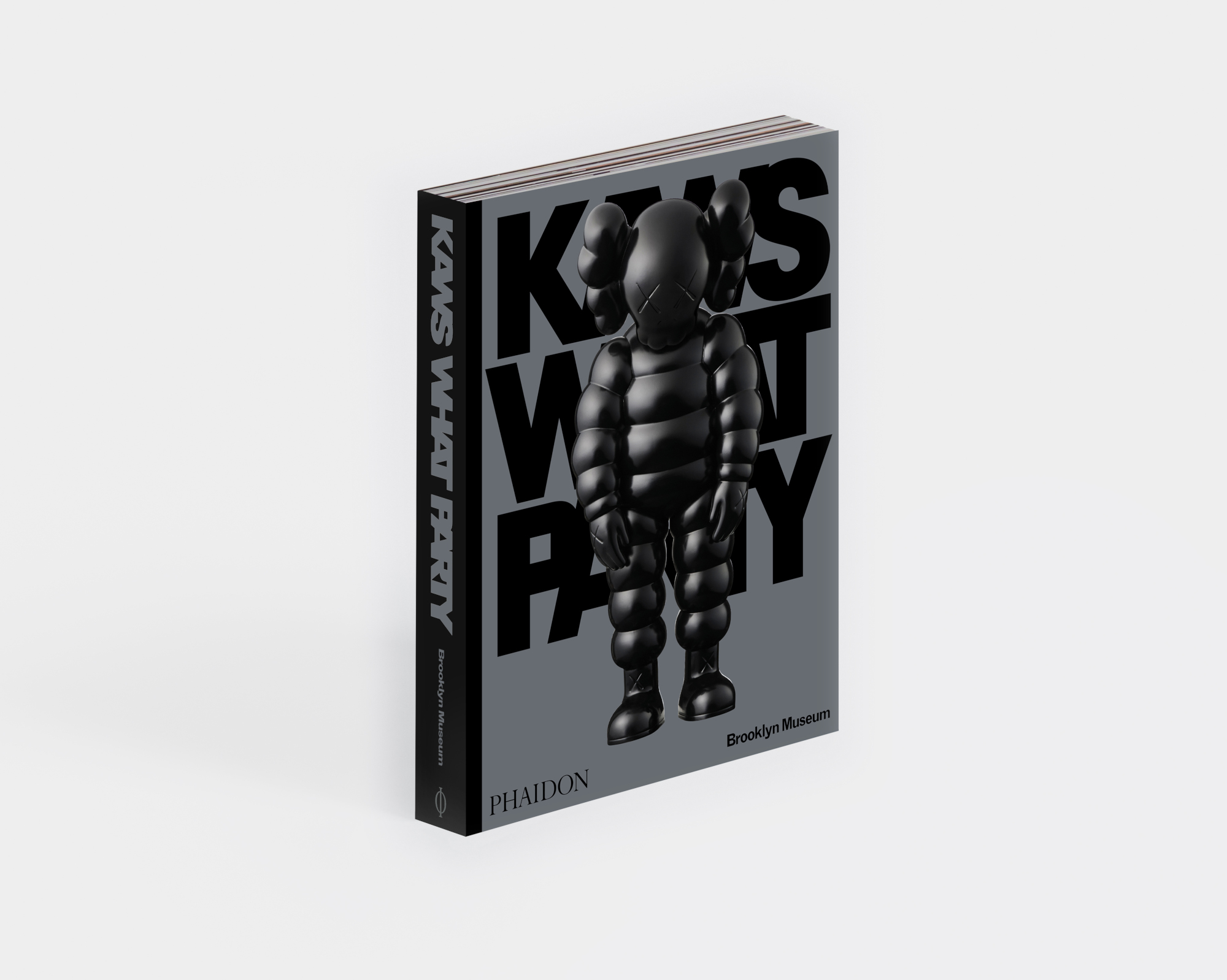
To see many more examples from both these early years and that subsequent body of work, get a copy of KAWS: WHAT PARTY. The new book, which accompanies the artist's sold-out show at The Brooklyn Museum, is available in a range of KAWS-approved colours; take a look at the pink edition here; the yellow edition here; the black edition here; and the orange edition here. No matter which one you pick, KAWS: WHAT PARTY will unlock access to a compelling new field within contemporary culture, pioneered by one of the most important artists of our time.
